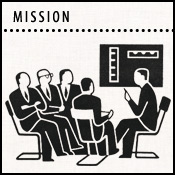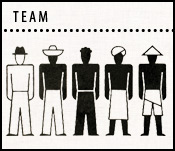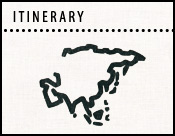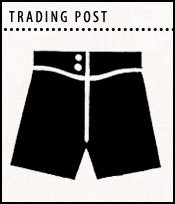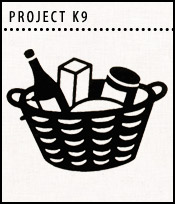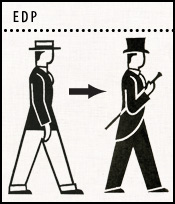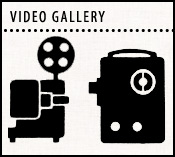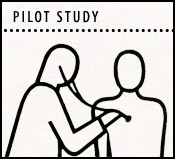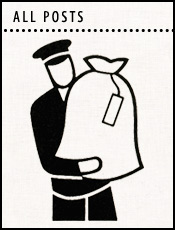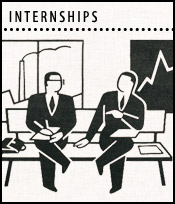It was 3:45 in the morning and somehow I was wide awake. It had been only a couple of hours ago that Scott and I had retired after being called to the large swinging windows of our room at the Hotel Nippon by a massive ruckus outside. When we pushed our heads out into the fresh but balmy Colombo night air, we saw a giant procession coming down the street. Most of the people in the procession were wearing headdresses and pushing a number of shrine/float type objects, set on wheels and lit up with hundreds of lights. These float-shrines were being pushed along by some while others, perhaps those in the most elaborate costumes, actually rode on the devices. The float-shrines were trailed by a van carrying a giant generator that was connected to the floats with a stout bit of electrical cable; it thundered and belched smoke.

So having only returned to my bed a few hours ago, why was I so awake? It was then that I realized the SIM city 2000 theme was playing, and this was a Pavlovian reaction. We needed to get to the airport in time to catch the 7:00 am Sri Lankan Airlines flight to Bangkok, and there was no time to waste. Scott and I struggled to pull ourselves together enough to confirm our baggage was successfully packed and drag it downstairs. Our hotel room at the Hotel Nippon had begun to look something like the apartment I had lived in during college, a place we lovingly referred to as the hovel. By this I mean it had become a wasteland of packaging materials, the smoke from multiple curls of anti-mosquito incense hung thick, and what seemed like hundreds of empty water bottles, bits of take-away packaging, and plastic bags blew through the room like tumbleweeds.
The night before, I had ventured downstairs in search of more take-out Koththu and stopped to prep the bikes for the next day’s travels, so we merely needed to put them in the bags and wait for the cab. The last night’s Koththu, by the way, had been incredibly spicy.

One of the spiciest things I had ever eaten, in fact. Â Luckily, we had some buffalo curd to soften the intense flavor of the dish.

After three bites, Scott had found it completely impossible to consume his Koththu, and I was suffering from a most persistent pain all over my mouth still slightly that next day (if you can call 4:00 in the morning day). The owner of the hyper-spicy Koththu joint had approached me as I was buying the stuff, and addressed me in English. “I’ve heard about you,” he said.
“Really?” I replied.
“Yes. I saw you eating bread and lentils next door, and I’d been wanting to come and talk to you but had not the confidence to disturb you. You were studying the history of Coca Cola.” This was true. Scott and I had been eating bread and lentils next door the previous morning and reading about the history of the Coca Cola company on the wikireader. “Why are you in Sri Lanka?” he had asked.
I explained AsiaWheeling to him. And while his cook was making the Koththu, he asked whether I could eat chilies. Having quite the chili ego, I smiled and said, “Oh I love chilies.” Perhaps his chef had taken this as a challenge.
Suddenly, for reasons I will never comprehend, the restaurant then dissolved into a giant argument. With the owner, the cook, and a waiter all screaming at one another about something. The cook began emphasizing his arguments by hammering on a wok with a large metal spatula. I became very uncomfortable and quickly paid for our Koththu, thanking them a few times with no real response, and hurriedly leaving.
Back in the lobby of the Hotel Nippon it was 4:00 in the morning, and our packing of the cycles seemed to have woken the manager; he appeared looking for a tip. The cab driver, it turns out, was present too, lurking in the shadows. He may even have been sleeping that night on the couch. Regardless, we were quite glad to know we had a ride to the airport, and though he had been pretty cold to us, tipped the manager generously, and walked out the swinging double doors of the hotel.
The taxi was more like a 15-passenger van. We had no trouble whatsoever packing the cycles and our luggage into it, and climbed into the thing with plenty of room to stretch out. Our driver was a very intense gentleman, driving very quickly and precisely though the quiet 4:00 am streets of Colombo. His driving was made all the more impressive, when I began to notice that he was not using a clutch. It seems that the clutch on this van had died some time ago, so the whole time he was clutchlessly shifting the thing!
Only the odd drunk and the ubiquitous packs of stray dogs were to be seen. When night wheeling, the latter had caused us a fair bit of grief but no actual violent encounters. Regardless, we were glad to be in the van, rather than out on the streets at this hour. We’ll save getting ravaged by a pack of dogs for later in the trip. Maybe in Kazakhstan.
We expected the airport to be as sleepy and quiet as the streets of Colombo at this hour, but we were sorely mistaken. It was a madhouse. Once we made it through the initial security check, we were siphoned into a giant curling line of people who were waiting to check into our flight. The line moved slowly and someone not far from me was suffering from a quite noticeable gastrointestinal ailment. So long, in fact, was the line that Scott was forced to leave at one point and exit security, in search of water.

Though it seemed to take days, we were finally able to check in. Despite the maddening line, the Sri Lankan Airlines personnel were once again startlingly friendly, and more than willing to accommodate the Speed TRs, taking great care to plaster them with fragile stickers, and carting them off specially, sparing them even from a ride on the luggage conveyor.
Sri Lankan customs was painless, once again full of smiles, and we made our way from there into the monstrously over-priced interior world of the domestic terminal. We bought what must have been the most expensive Nescafe of either of our lives and made our way to one of the few cafes in the terminal to await our flight. To our great surprise and excitement, the cafe had free wireless Internet, which was so addictive and transporting that we nearly missed our flight. Realizing we had become quite tardy, we hurried down the terminal toward our gate, where we were for one reason or another spared from the passport security check. Â After passing through the check, we chatted with a weathered and disheveled Frenchman in his mid 60s who had just arrived from Paris and was heading to Bangkok with us. Â As cabin luggage, he brought an open rubber diving bag with a single nylon strap holding it to his shoulder. Â He wore chucks, loose jeans with no belt, a plaid shirt, and stylish glasses. Â Wherever this fellow was going, we thought, must be a place worth visiting.
While the Indian fellows behind us were being detained and investigated, we were able to hurry our way onto the plane, where we had what was likely the nicest economy seats on the entire jet.
They were at the bulkhead, but for one reason or another, had been given a whole extra row’s worth of leg room. We lazed back and settled in for the flight.

Out the window, the beautiful and mountainous Sri Lanka passed below under wispy clusters of white clouds.

I’ll tell you, dear reader, Sri Lankan Airlines really knows how to treat a fellow. We were given delightful pineapple-themed menus from which to order brunch, offered many glasses of juice and coffee, and shown such kindness by the staff. Sri Lankan Airlines: huge AsiaWheeling stamp of approval.

After the meal, I retreated to the bathroom to freshen up with a shave.

I had barely begun to watch Liza Minelli’s Lucky Lady on my private screen when we landed in Bangkok.

We had been in touch with our Thailand Bureau, its chief officer being a Mr. Dane Wetschler, about meeting up that day and arranging for a place to stay, but unfortunately, had been unable to reach the point of email exchange in which we would acquire our man’s cell phone number. Â Fruitlessly, we powered up the mobile office to scour our email, but the digits were no where to be found.

So we were riding somewhat blind. The only information that we had that would connect us to the AsiaWheeling Thailand Bureau was the address Dane had given us to use in shipping his business cards.

So our plan was to navigate through immigration, then take a cab to the address, in hopes of finding him.
Strangely enough, Thailand was to be the least English speaking country we had yet traveled in, but also, at least in the case of Bangkok, one of the most developed. The Bangkok Airport was clean and efficient, as we had remembered it, sporting some highly evolved advertising. My stomach was still rumbling a little from the high voltage Koththu that I had purchased in the middle of the night, so the presence of sparkling clean and fresh scented bathrooms was also a delightful comfort.

We stopped at a Japanese style Ramen shop to enjoy two steaming bowls of sustenance, which were so refreshingly different that despite very few hours of sleep the previous night, they brought us back into the present. And with that we climbed into a cab. The cabbie spoke very little English and had no idea where Dane’s place was, though when we showed him the address that we had scrawled on a piece of paper, he did recognize the neighborhood. It seemed he would be able to get us to the general vicinity , but we’d have to rely on the locals for the exact location.
As we drove deeper and deeper into Bangkok, Scott and I both began drawing lines between this city and Tokyo. It had a very solid stylistic feel to it, good-looking streets, and the same mixture of medium-rise apartment buildings, covered with balconies containing A/C units and plenty of drying laundry, and giant business and condominium towers, which loomed sporting huge advertisements.

It was also filled with convenience stores, just like Tokyo. It looked and felt wealthy in way we had not experienced since Kuala Lumpur. When we arrived in Dane’s neighborhood, we found it to be a maze of small streets, cluttered with street food stands, 7-11s, and little guest houses. The pedestrian traffic was surprisingly white, indicating this was an expat neighborhood.
We drove back and forth on the small streets looking for Sathorn Condo Place, but to no avail. We asked for directions again and again, and while each person we (or our cab driver) spoke to was more than happy to help, no one seemed to know which apartment building was Dane’s. Finally, we parked outside a 7-11 and our driver radioed in for navigational support.
The navigational support was inconclusive, and finally we just climbed out of the cab and unfolded the cycles. We now began to explore on wheels. As we rode, Scott began to explain a theory that he was working on, drawing the conclusion that in fact the mysterious condominium complex was actually above the 7-11. And when we returned to the 7-11, the woman at the front desk seemed to confirm this.
We then approached a nearby security guard and started to communicate in pantomime that we were looking to encounter a giant curly-haired man who we knew lived inside. He looked at us curiously, until one of his compatriots recognized our description and exclaimed “Dahn!” Ah, it seems Dane was going by the name “Dahn” here in Thailand (we later discovered that this was because ‘dane’ in Thai means something like ‘refuse to be discarded’ …fair enough). The new security guard, promptly unlocked the door and led us to the elevator and up to the 7th floor. Once the elevator doors opened, we walked directly across to a door, which sure enough had a couple of tee-shirt shaped charms hanging next to it, one of which said “Dane,” the other of which said “Jeremy.” Looked like the right place…
Our guard knocked sharply at Dane’s door and we waited. He knocked again. And again. He began to frown and look at us. We were just about to give up when we heard a slight shuffling noise inside. We starting knocking again with renewed fury and soon the door opened. And there he was, in all his glory, 7 odd feet tall, size 16 feet, prominent beak of a nose and curly black hair. He greeted us with a giant grin, and dismissed the security guard with a deftly maneuvered “kup kun kap.”

He immediately invited us to the roof for a cup of coffee and to take in a view of the city. And what a city it is.

It was already obvious. Thailand was going to be a decidedly new chapter of the trip. Â Coming back downstairs, Dane serenaded us with beats from his MonoMachine, an electronic music sequencer synthesizer.

That night, Dane introduced us to his girlfriend, Karona, a Japanese woman living in Bangkok, and her friend, Natsumi. The five of us went out to a fantastic restaurant that evening.

It was our first taste of Thai food in Thailand, and we were quite blown away, not least so by the rice. It was very long grain, and unbelievably sticky.

Dane explained to us that it is often eaten with the hands. Â We were thrilled by the plates of greens which flanked each meat dish.

As the night wore on, we lounged and munched on glutinous rice shapes, discussing, among many other things, plans for all of us to wheel Bangkok together the next day.


































































































































































